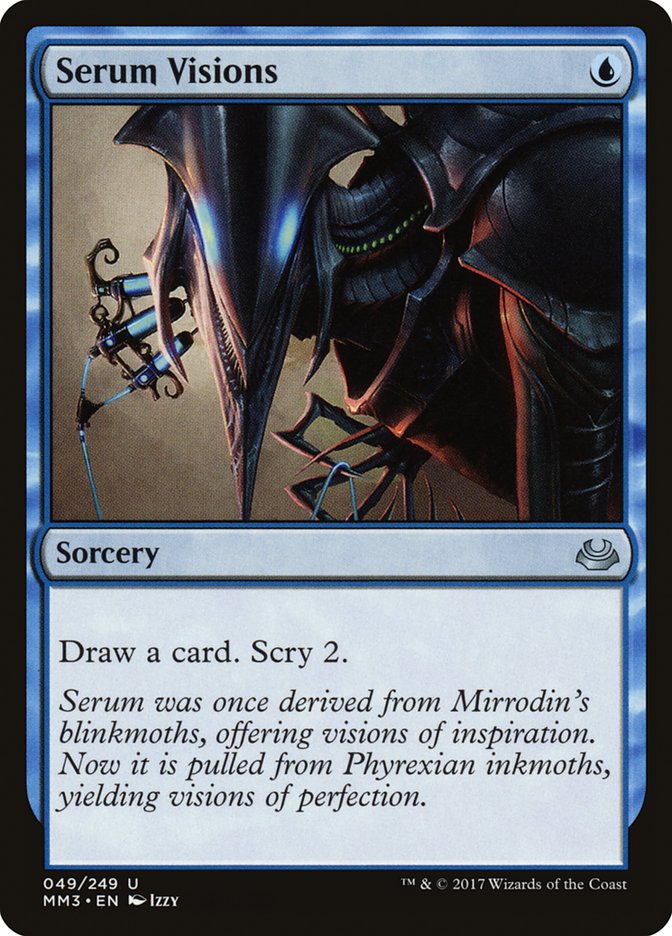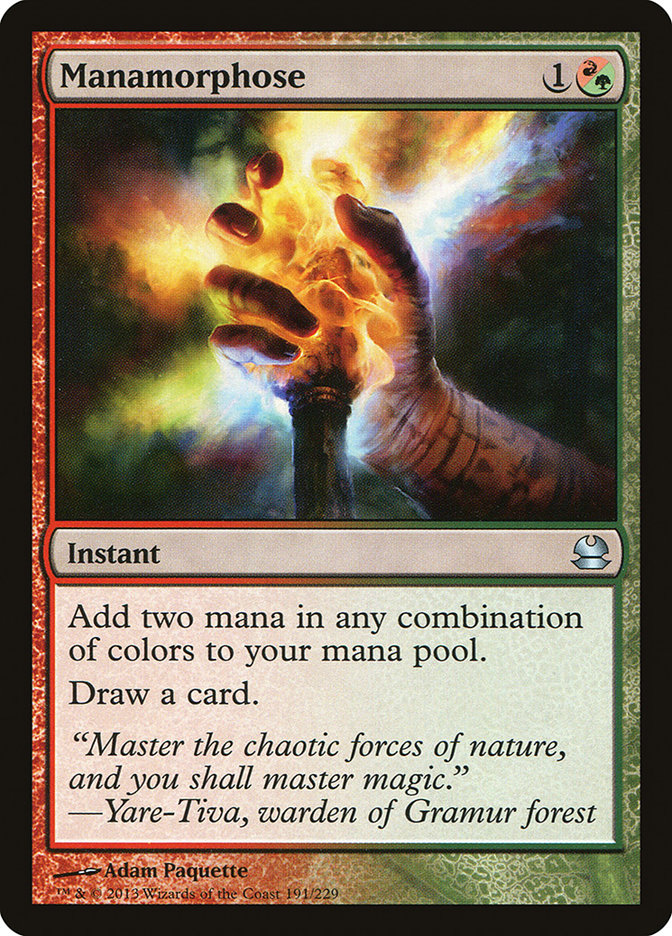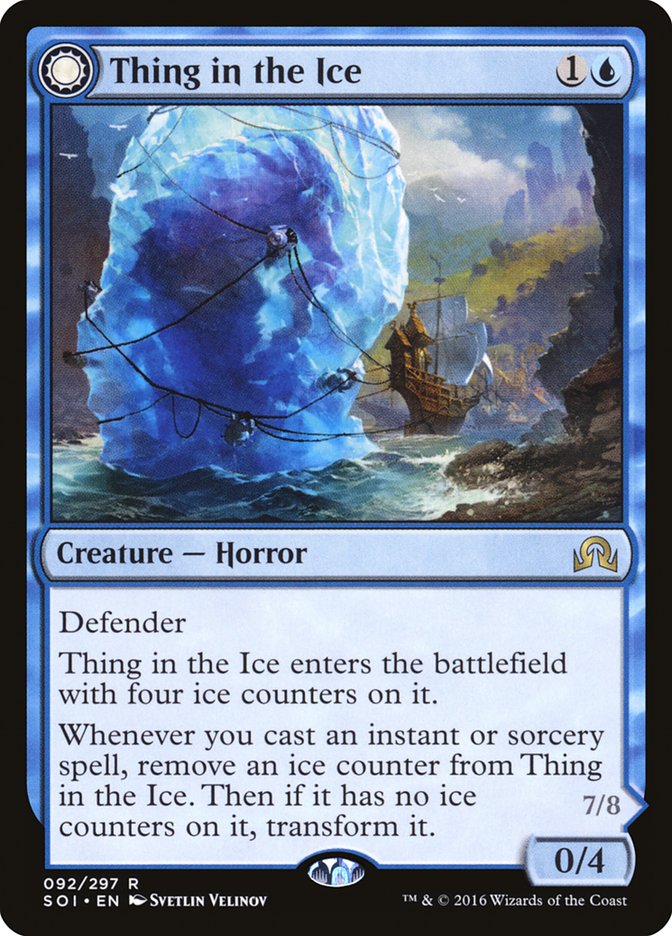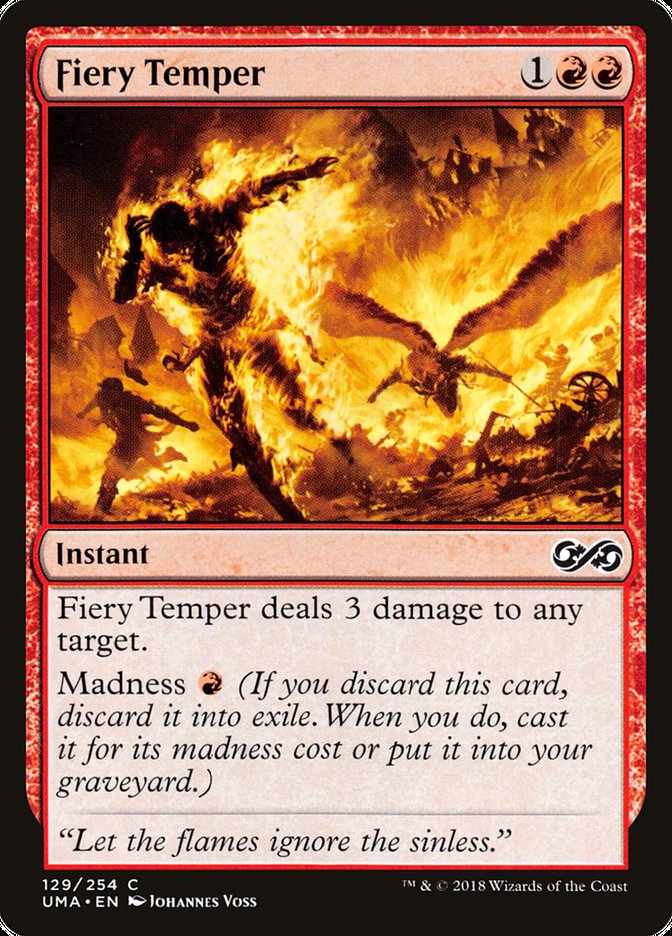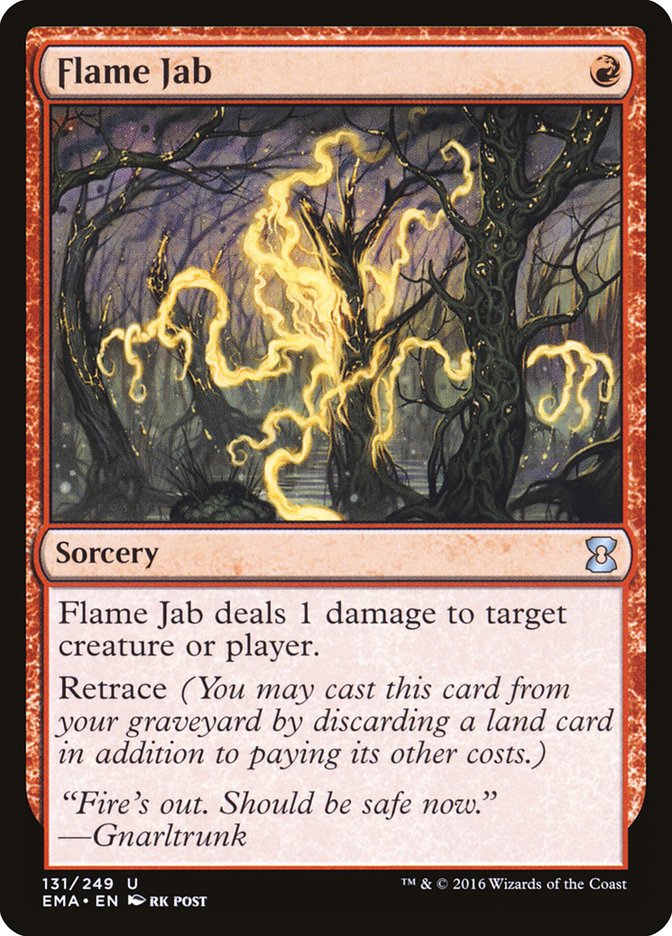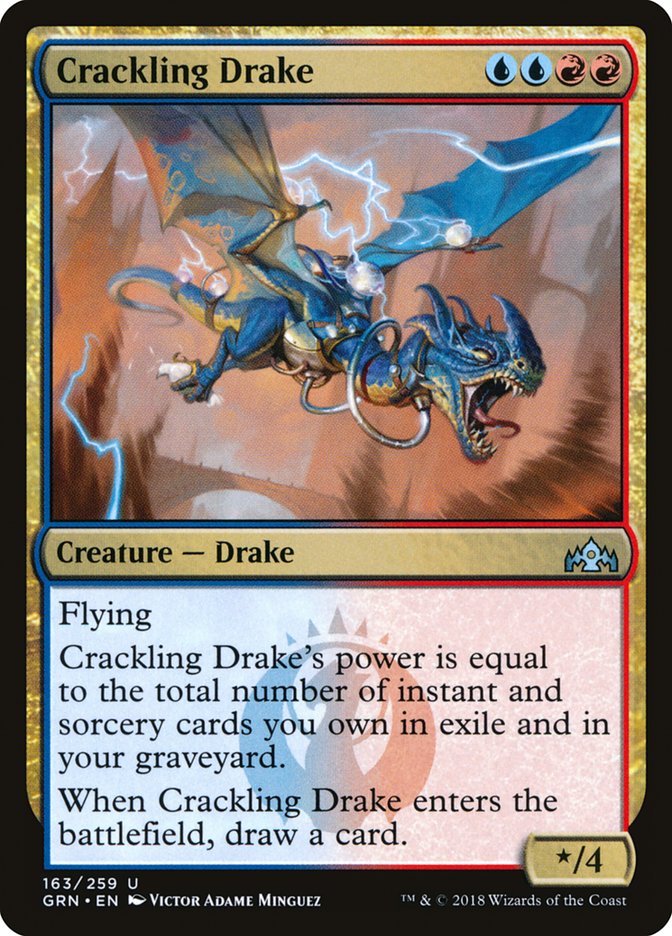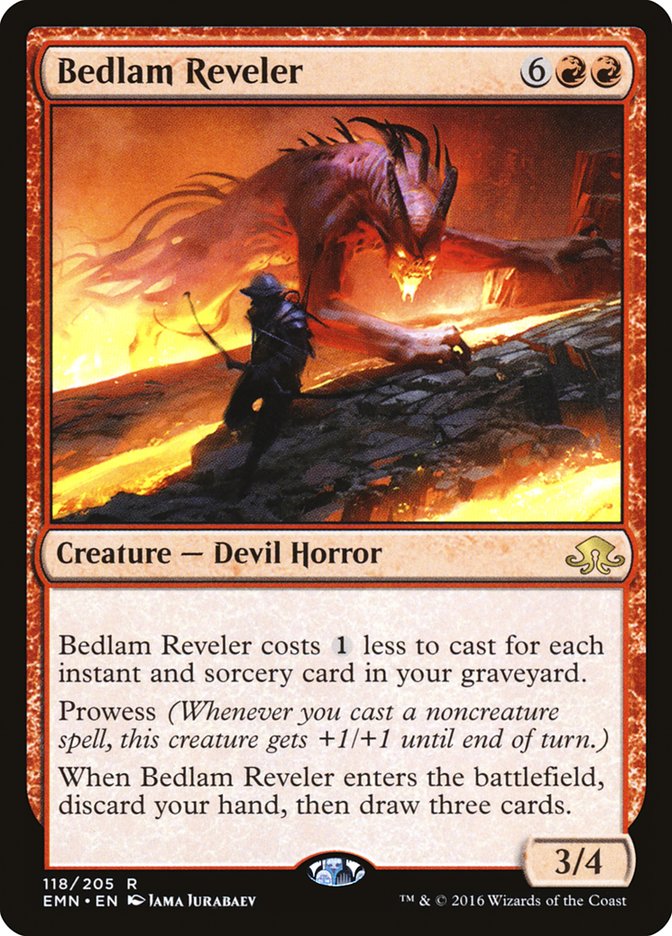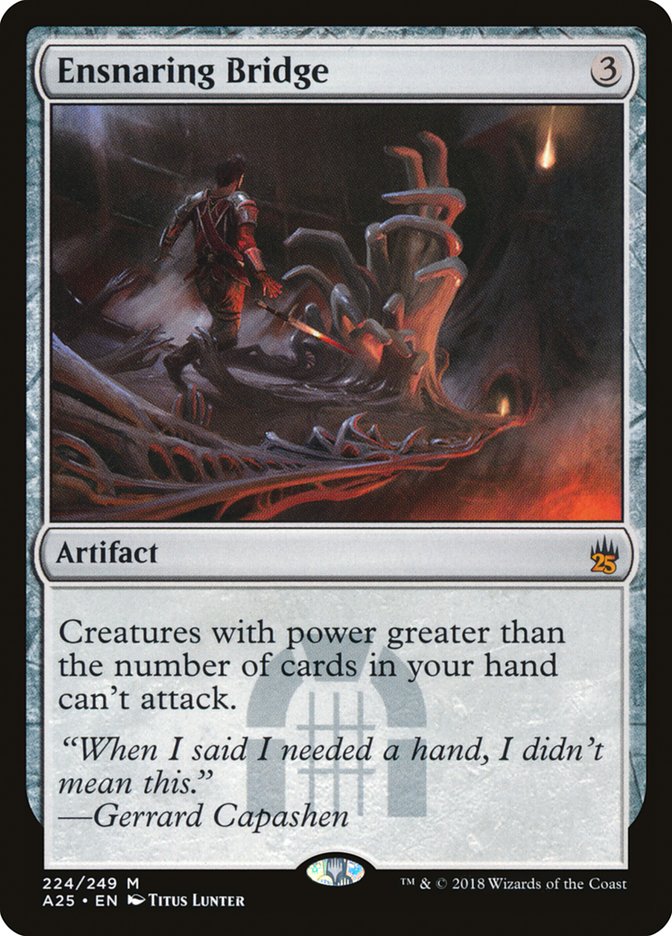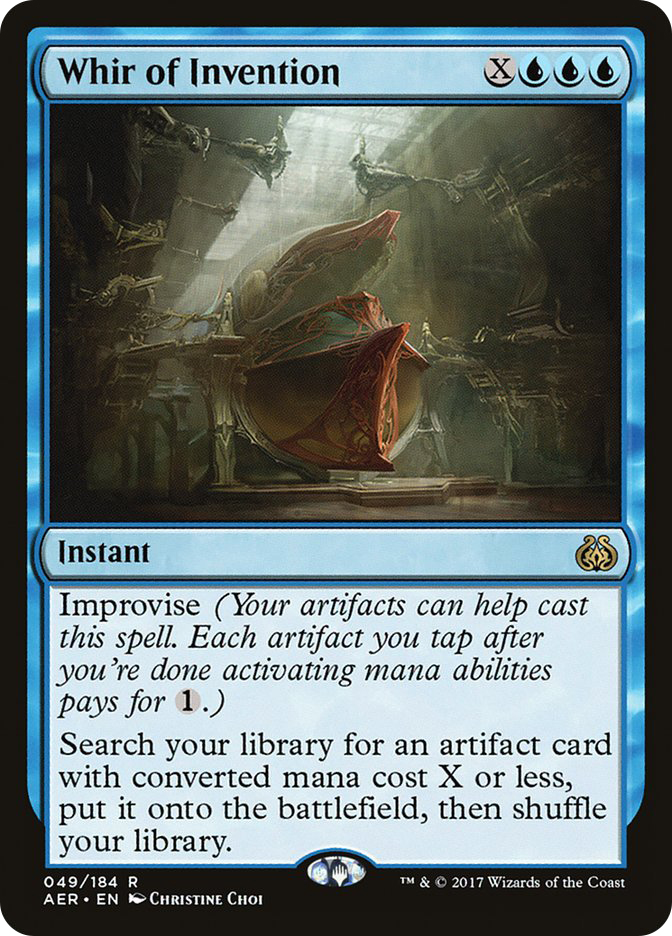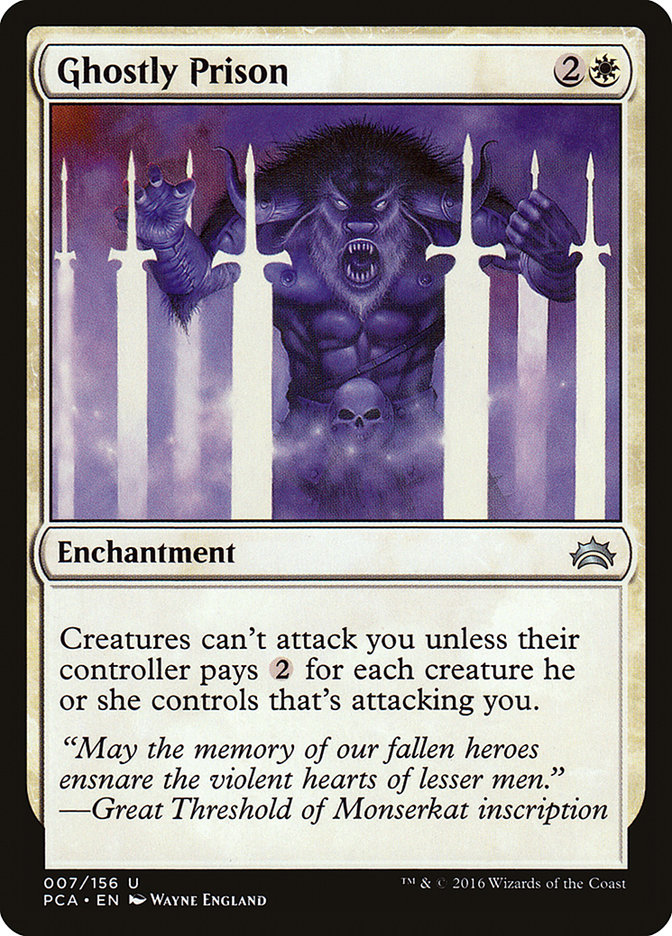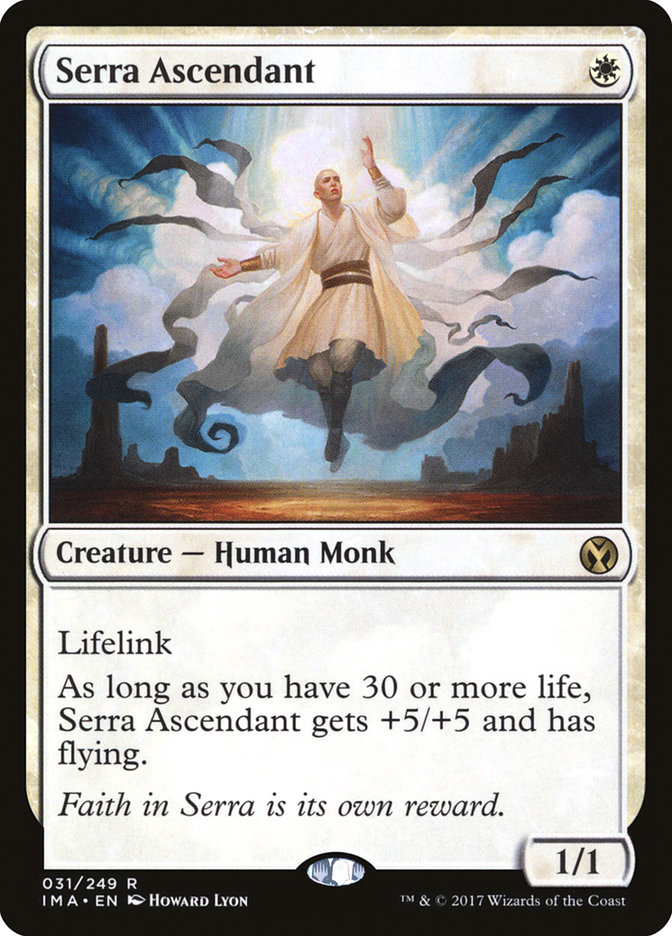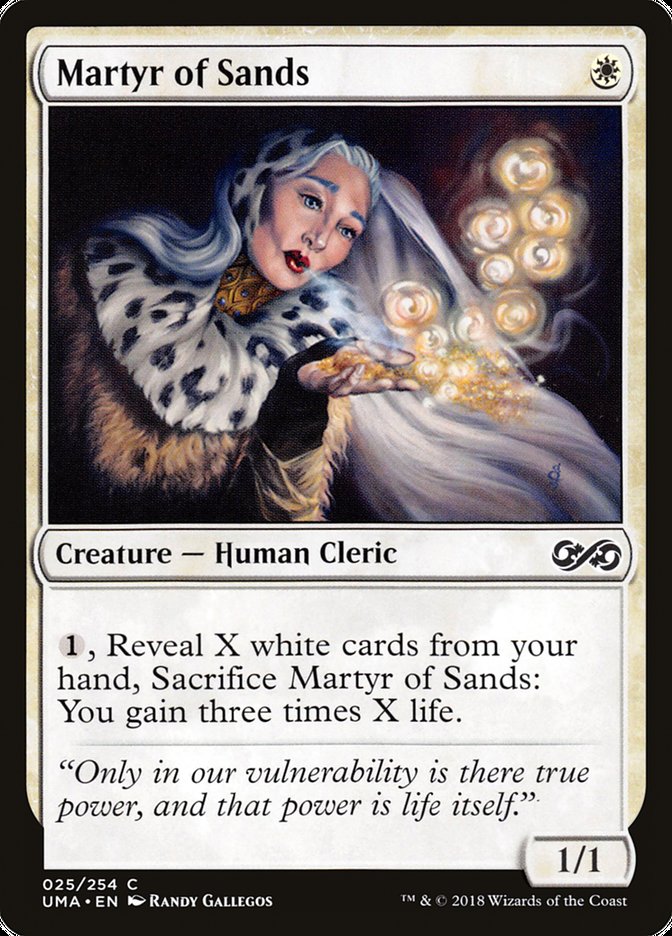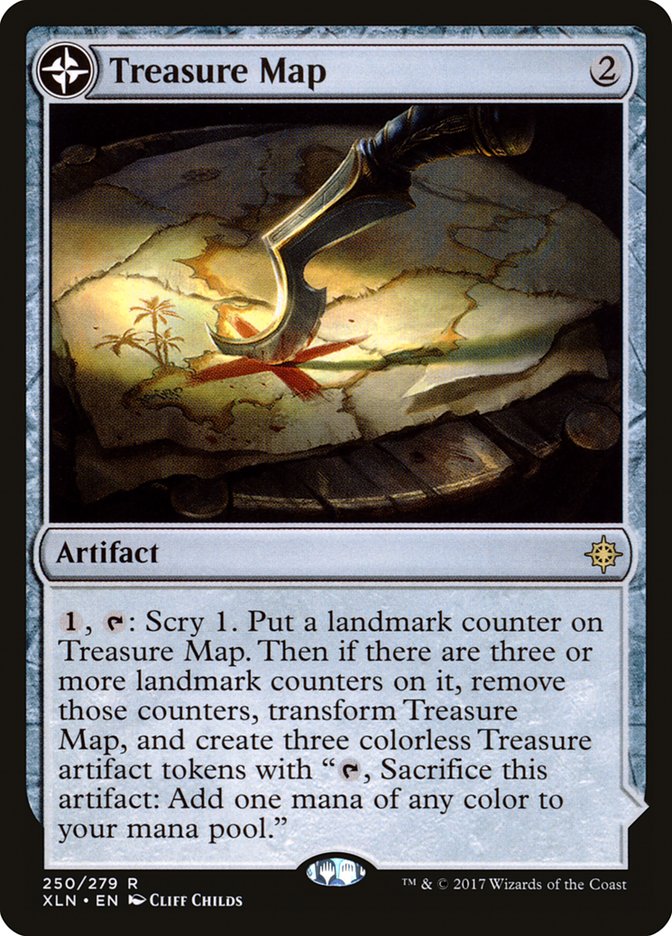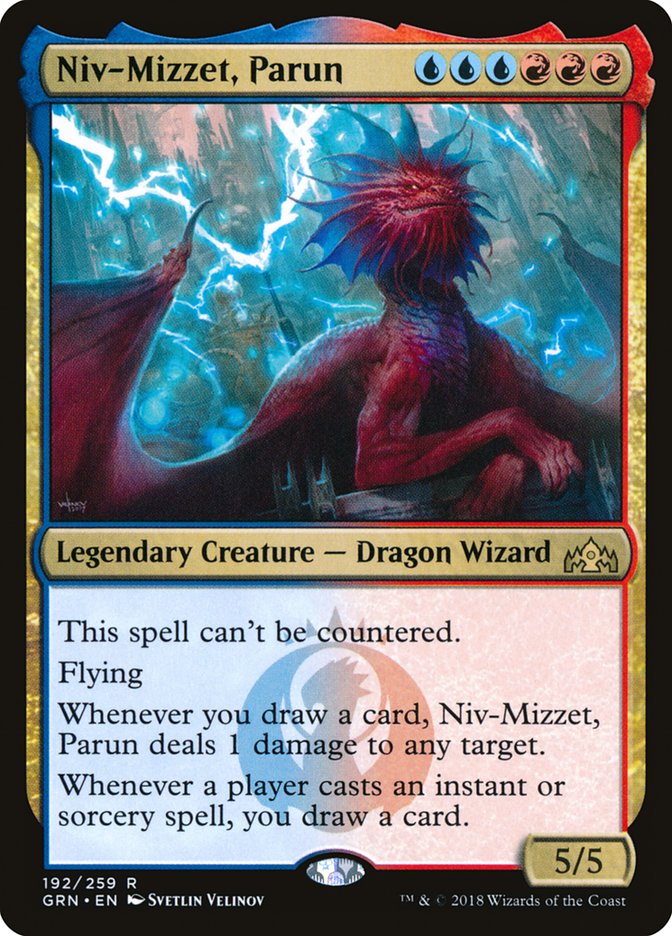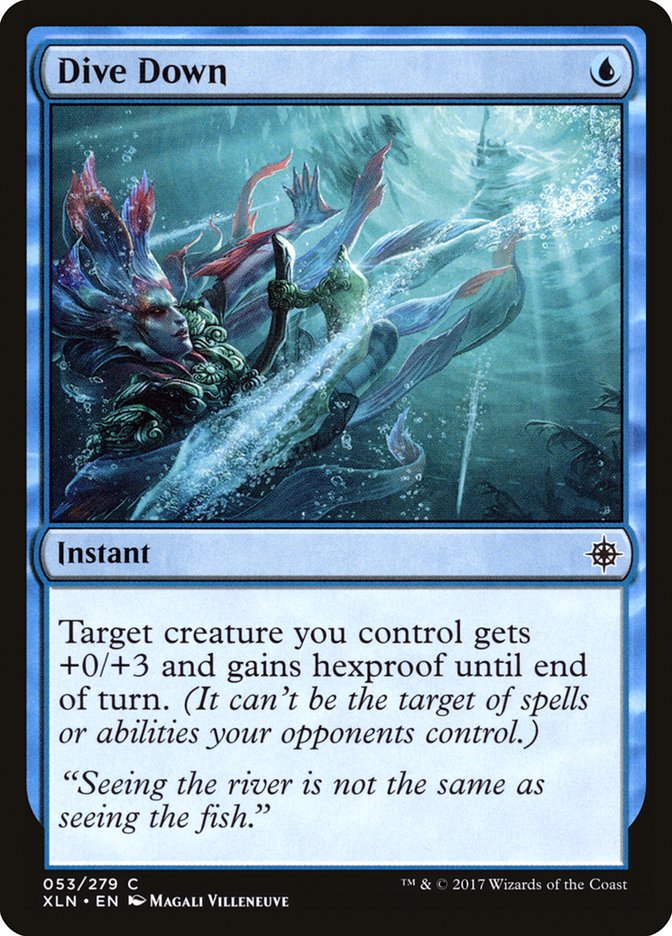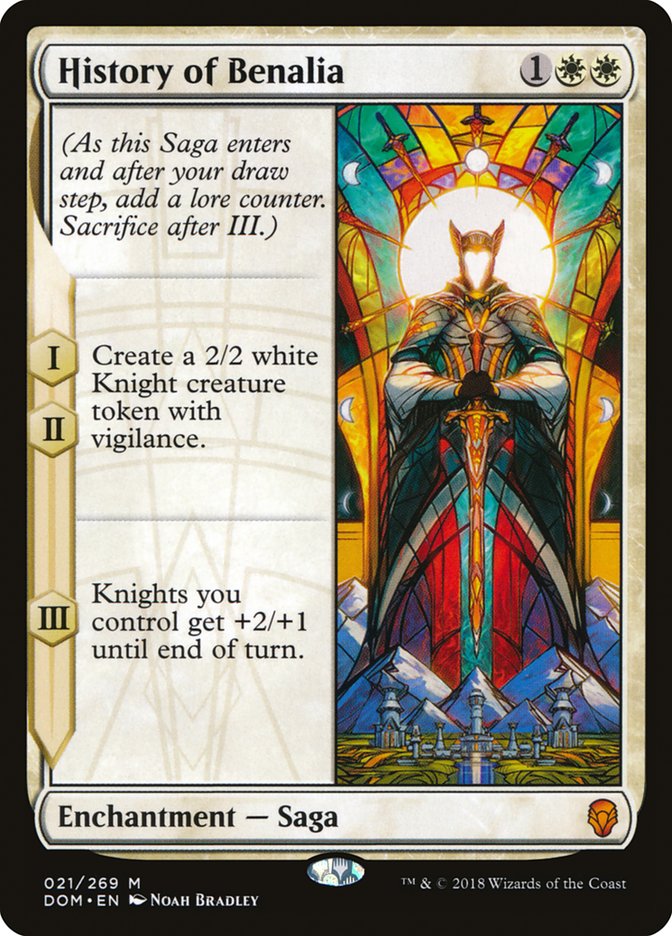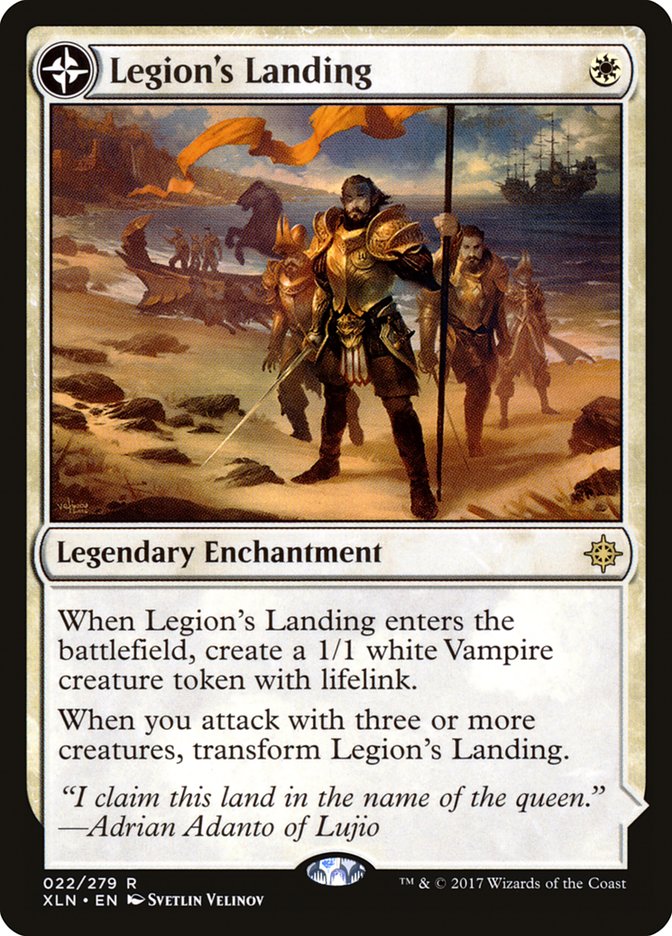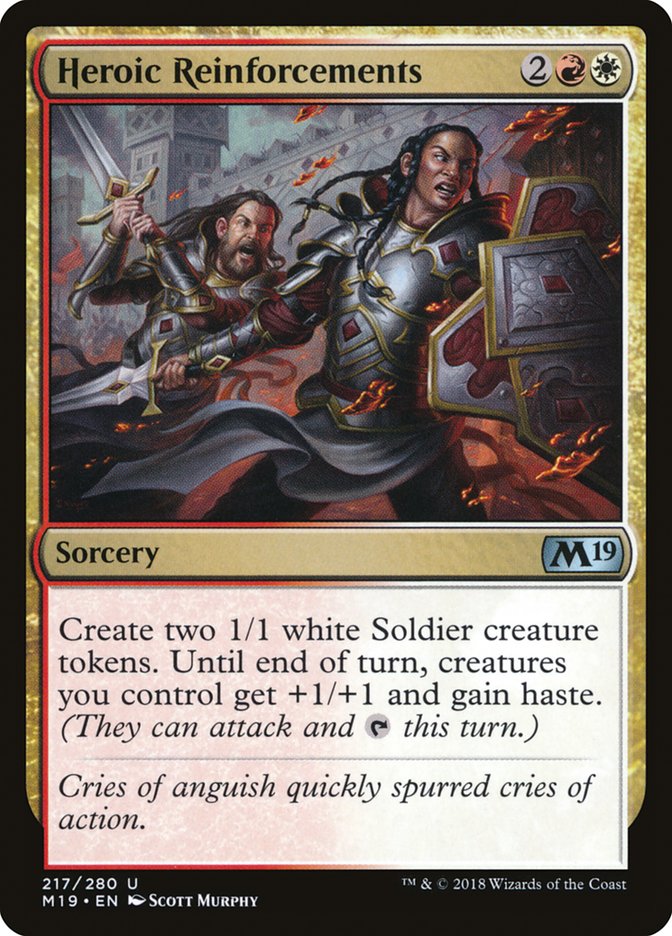Season Two of the 2018 SCG Tour is wrapping up at the Season Two
Invitational at SCG CON Winter, and for an event that’s a huge culmination
of all the events and experiences on the Tour so far, SCG Baltimore might
have just turned the world on its head.
All because of one card:
Arclight Phoenix may not have been on the block for long, but this big bird
on campus showed the world just how seriously it wants to be taken over the
weekend. I’d have to look through the archives, but I’m not sure any single
card has had the winning weekend that Arclight Phoenix just did, and the
only one I can think of that might have before would be Stoneforge
Mystic.
Not only was there the fantastic finals match pitting eight copies of
Arclight Phoenix against each other for the trophy, but it was also
responsible for winning the Modern Classic and the Standard
Classic? Coming into the weekend I had an idea of what the metagame would
look like for the Invitational, but after this, everything could be
entirely different than I had imagined.
So, what’s the plan? Where do we go now that there’s this new obstacle in
our path? How can we show these Arclight Phoenix decks that we won’t get
pushed around? Well let’s start by looking at some:
Modern
Creatures (13)
Lands (18)
Spells (29)

Creatures (12)
Lands (18)
Spells (30)

Creatures (15)
Lands (17)
Spells (28)

Both Patrick Chapin (
read here
) and Ari Lax (
read here
) had quite a bit to say about these decks and the deckbuilding choices
that were made, so if you haven’t read those yet, be sure to go over to
Premium and do that, but what I’m going to break down here is their
functioning strategies and avenues of attack.
Something amazing about Modern is the variety and complexity of
interactions in any match, and when you’re unfamiliar with what your
opponent is trying to accomplish it can be easy to make mistakes. I’m not
going to go as far as saying these Phoenix decks are going to be a flash in
the pan when they’re adapted to–they’re definitely strong; however, I
wouldn’t be surprised if there weren’t a few of these players’ opponents
still kicking themselves for a mistake they made that could have been the
difference in making the Top 8 or finishing just outside of it.
The Izzet and Mono-Red Phoenix decks in Modern have a couple of important
gameplans they’re trying to enact and they are as follows:
Put an Arclight Phoenix onto the battlefield as fast as
possible.
The best draws involve casting a cantrip and a Faithless looting to set
them up in the graveyard, and then using a turn of Manamorphose or Gut Shot
alongside two other spells to get their Phoenixes onto the battlefield.
Their more average draws without a free spell are usually starting their
clock on turn 3, but turn 2 is very possible. During Round 10 of SCG
Baltimore, I played against Izzet Phoenix and in game 1, I was extremely
rewarded for naming Manamorphose with my Meddling Mage in an attempt to
suppress this, forcing my opponent to find another free spell to cast to
transform his Thing in the Ice before I could cast Reflector Mage. While he
did and I lost, keep in mind that the deck is about having velocity first
and capitalizing on that velocity second, so do what you can to disrupt
that.
Clean up the battlefield and establish control over
it.
For Izzet Phoenix this job is shouldered heavily by Thing in the Ice, which
has proven itself in creature dominated formats of the past as ruthless and
effective in the right shell. The Mono-Red Phoenix decks, however, are much
more reliant on cards like Fiery Temper, Risk Factor, or Flame Jab to keep
the battlefield clear and the game in motion for Phoenix to continue
applying pressure and bridge the gap into their stage three.
Pull ahead and stay ahead with a haymaker threat enabled by
velocity.
Every time I look at a Crackling Drake in a Modern deck, I wonder how it is
we arrived at this day and age, but Izzet Phoenix makes this card bigger
than you may ever be able to imagine, kills opponents almost instantly, and
draws a card to boot. Mono-Red’s Bedlam Reveler has a much higher payoff of
drawing three cards while still being sizable and easy to grow, providing
reach by finding more copies of Lava Spike and Lightning Bolt to close the
game out or continue controlling the battlefield.
With where Modern is now, I’d say that Izzet is a better choice than
Mono-Red because of how good Thing in the Ice is, but both of these decks
are very strong at what they do, and there are merits to playing either. If
I wanted to beat specifically Arclight Phoenix at the Invitational this
weekend, I’d probably play one of these two off the beaten path decks that
gain stock as long as this deck is around.
Lands (21)
Spells (39)
- 4 Ensnaring Bridge
- 1 Crucible of Worlds
- 1 Artificer's Intuition
- 1 Pyrite Spellbomb
- 2 Tormod's Crypt
- 3 Chalice of the Void
- 4 Welding Jar
- 3 Engineered Explosives
- 1 Pithing Needle
- 1 Bottled Cloister
- 4 Mishra's Bauble
- 2 Expedition Map
- 4 Mox Opal
- 1 Witchbane Orb
- 1 Grafdigger's Cage
- 4 Whir of Invention
- 1 Sorcerous Spyglass
- 1 Damping Sphere

The first of these is the deck for people who like going to the DMV: Grixis
Whir. Grixis Whir is not only hateful of the graveyard with maindeck
Tormod’s Crypt and Grafdigger’s Cage, it’s also full of Chalice of the
Voids and Ensnaring Bridges that stop Phoenix dead in its tracks. If there
were one tournament where I both would and would not play a deck like
Grixis Whir, it’s the Invitational.
On one hand, more of the decks I can shut out are in the field and people
might not expect it, but on the other, I’m not very likely to make many
friends willing of avoiding going into turns when I have a lock assembled
and the day could get messy. I don’t blame anyone for making the choice to
play this deck, but it comes with some risks…
You must be okay with that.
Creatures (21)
- 4 Martyr of Sands
- 4 Ranger of Eos
- 4 Serra Ascendant
- 4 Squadron Hawk
- 1 Archangel Avacyn
- 4 Thraben Inspector
Planeswalkers (5)
Lands (24)
Spells (10)

The other deck I’d play if I were gunning specifically for Arclight Phoenix
would be the deck
Tom Ross wrote about last week on Premium
: Mono-White Martyr. Martyr makes anyone who registers a copy of Lava Spike
feel like an idiot, and Serra Ascendant might as well be a Baneslayer Angel
for one mana. Baneslayer Angel and Lyra Dawnbringer are the backbone of
Jeskai and Azorius Control’s plan of controlling the battlefield against
graveyard recursive strategies and playing one on turn 3 is much better
than turn 5.
If there’s a deck that no Mono-Red Phoenix player wants to play against in
the world, it’s probably this one. Nothing the deck is trying to accomplish
comes remotely close to beating the plan Martyr has drawn up.
If you’re not someone who has a big love in their hearts for either of
these decks, that’s okay too. Modern is still a wide open format, and you
have until Round 1 of the Invitational to figure out how you can choose to
fight Phoenix. The deck is so new to the format that I don’t expect it to
have an absurdly large number of players, but I wouldn’t be surprised if it
took up the same portion of a metagame percentage as Tron, Hexproof, or any
other Modern deck you wouldn’t consider a “fringe” archetype.
Standard
While I would absolutely believe it if you told me you played all eight
rounds of Modern without seeing a single copy of Arclight Phoenix, trust me
when I say you’ll probably see at least one in the Standard portion. Among
the three copies of Izzet Drakes opting to play the aforementioned
fire-chicken in the Top 16 of the Classic, two finished within the Top 4
with one of them taking home the glory of first place. While not as new or
surprising as the Modern adaptations, you don’t want to be caught off guard
by this deck either just because it went quiet for a little while.
Creatures (12)
Lands (21)
Spells (27)

Creatures (13)
Lands (21)
Spells (26)

It was assumed that the Phoenix decks in Standard wouldn’t hold up to the
ensuing midrange war being fought between Jeskai and Golgari, but that has
made Standard very interesting. In Standard, beating Phoenix isn’t exactly
a foreign concept; Adrian Sullivan’s patented combination of Treasure Map,
Niv-Mizzet, Parun, and Dive Down certainly did the trick, as does Golgari
presenting a large Wildgrowth Walker quickly and outracing the birds. So
why did the deck do so well in this tournament?
Jeskai and Golgari both made up a drastically large portion of our Top 16.
They’re two of the best decks, and everyone knows that. That is why Drakes
is also one of the best decks: because everyone knows Jeskai and
Golgari are the best decks. The first cards to go when something like this
becomes the dynamic are cheap removal spells.
It’s hard to tell what people will do for the Invitational after seeing
this event. Who knows if it will involve more or less answers to the deck?
If you’re someone who chooses to engage in the midrange arms race, don’t
say I didn’t warn you! You’re making your choice!
Creatures (28)
- 4 Ajani's Pridemate
- 4 Adanto Vanguard
- 4 Skymarcher Aspirant
- 4 Benalish Marshal
- 4 Leonin Vanguard
- 4 Healer's Hawk
- 4 Venerated Loxodon
Lands (20)
Spells (12)

One of the other ways to beat these Izzet Drakes decks is to go all the way
back to the Pro Tour and pick out some Boros Aggro decks that overload the
slowest starts and can go toe to toe with the fastest. One of the things
that Izzet Drakes lacks in Standard is a good sweeper like Deafening
Clarion to suppress the aggressive decks.
Putting out multiple creatures in a turn or on a single card really
snowballs into control of the battlefield through combat if the Izzet
player is without a Goblin Electromancer. It’s hard to set up and answer
everything in most of the starts Boros Aggro is known for, and it is extremely punishing.
It’s almost unbelievable how much has changed and continues to change
throughout the major formats going into the Season Two Invitational, and
I’m excited to head to SCG CON Winter and play in a tournament where every
single match of Magic matters. With Top 16 on the Seasonal Leaderboard well
within reach following a good finish at the Invitational, I was already
feeling the pressure as Day Two of SCG Baltimore was playing out. It’s the
most exciting time of the year to be a player on the Tour, and I can’t wait
to see how things shape up!




